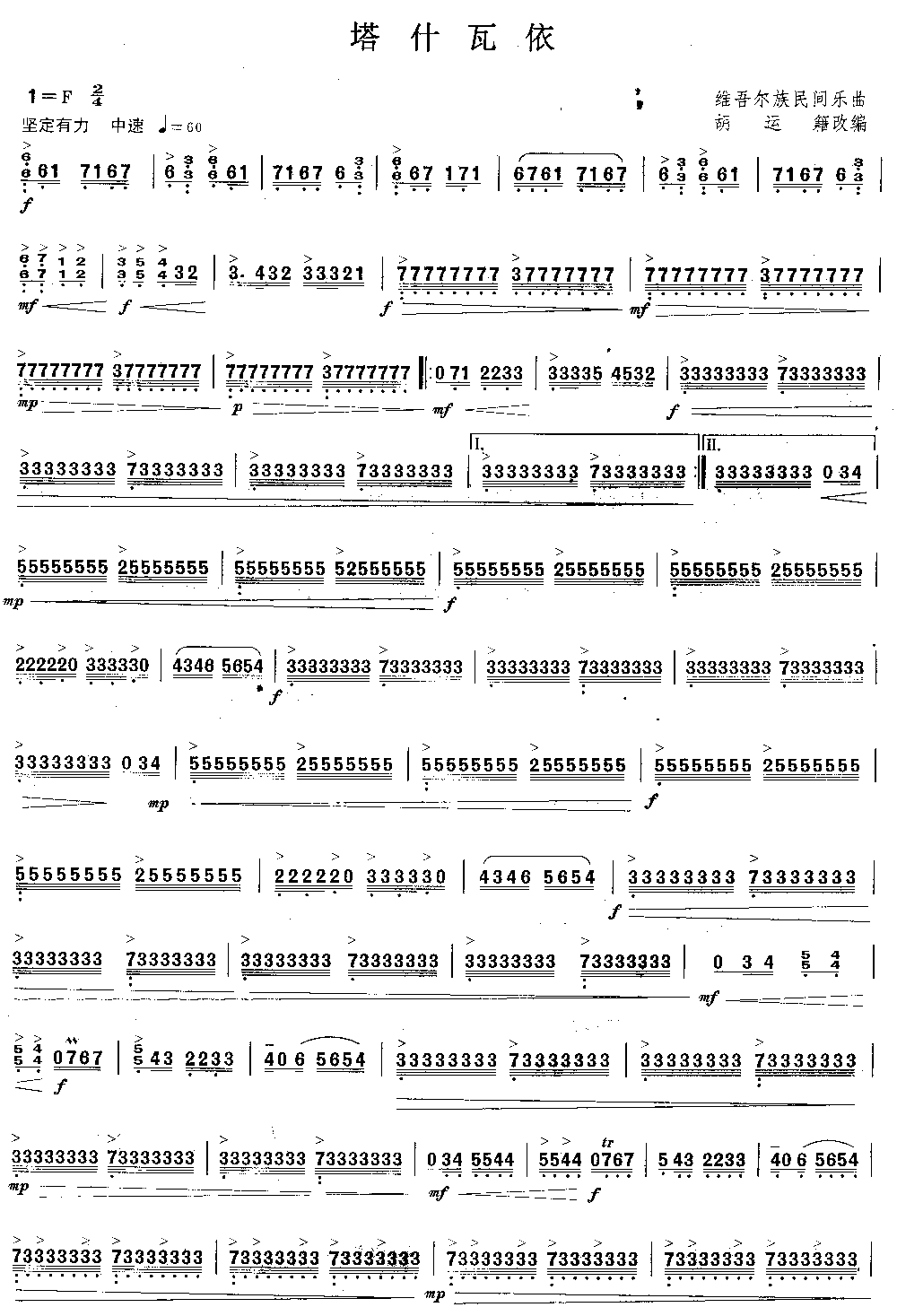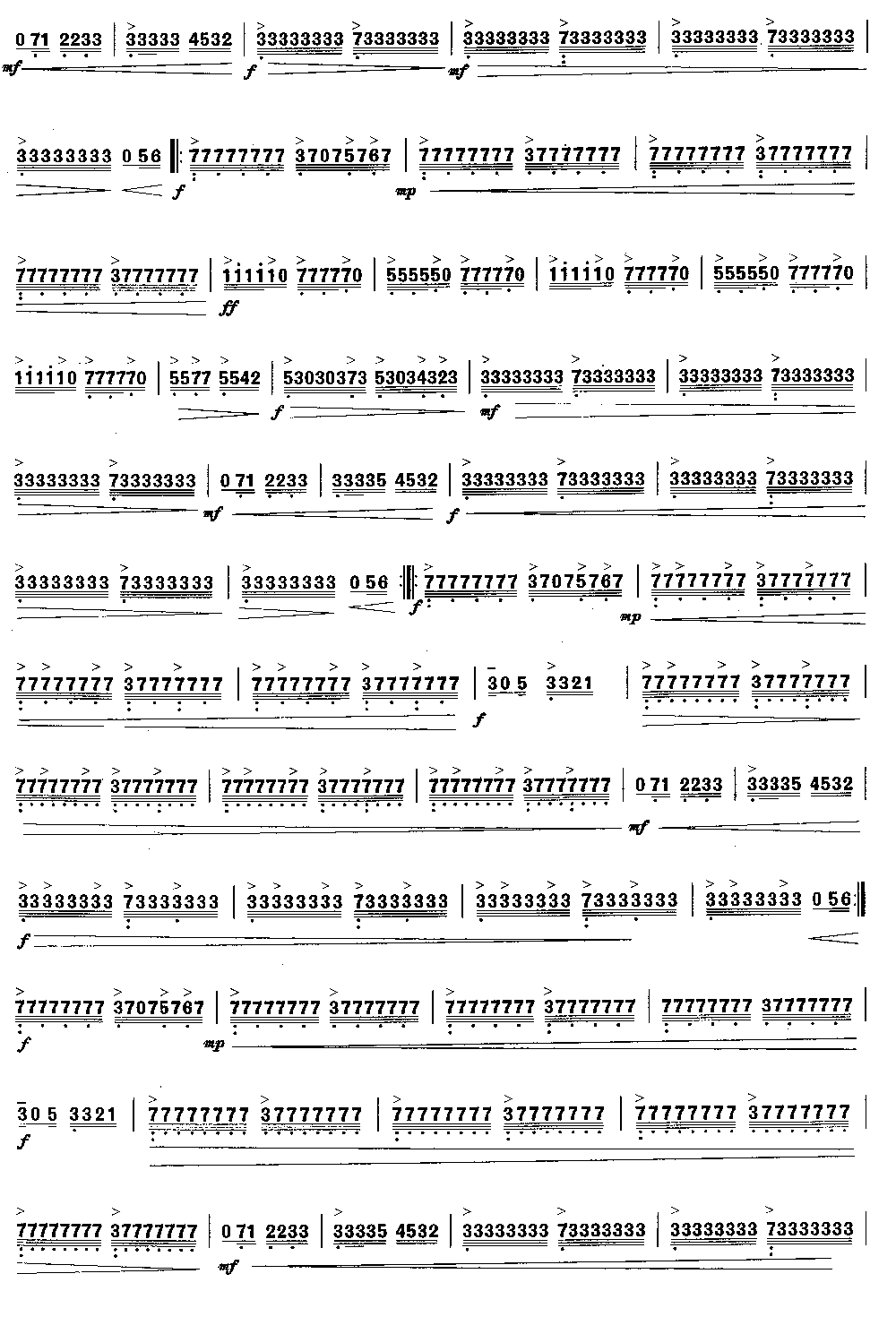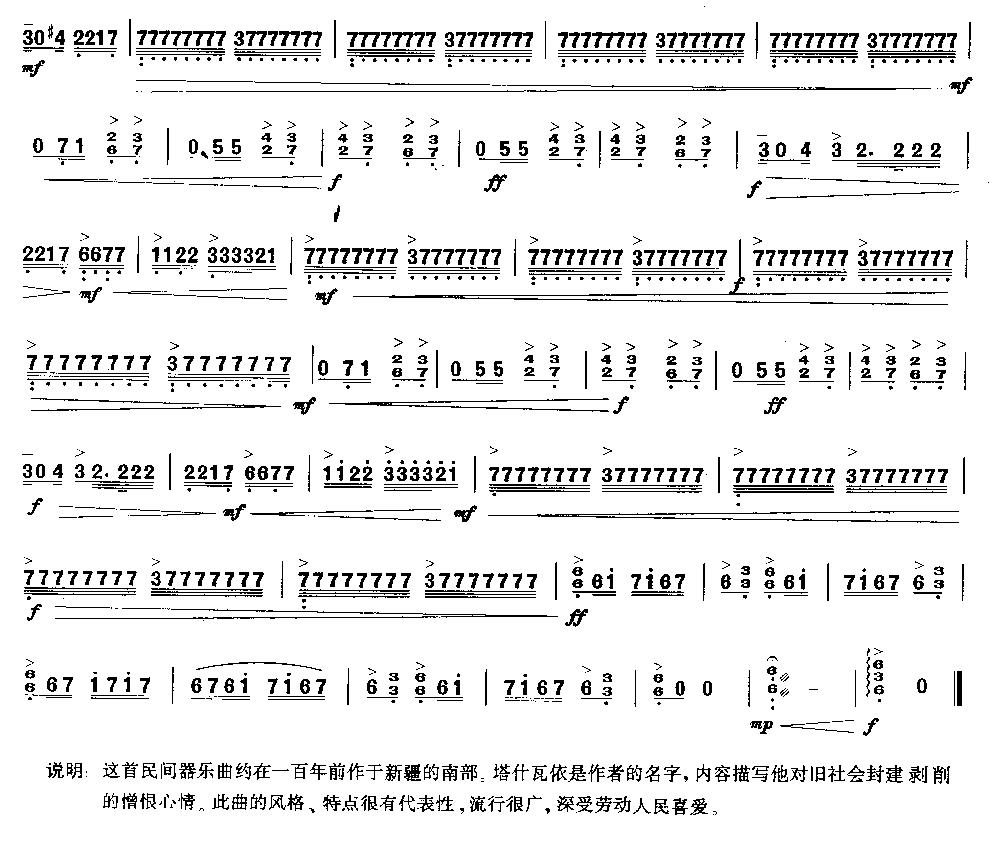Tashwai(yangqin sheet music)
Organized by 黑猫不是喵 on 2022-03-10


 Tashwai is organized by 黑猫不是喵 on 2022-03-10,You can use dulcimer,Clang to play; Through the music score provided by us, you will be able to master it skillfully and become a member of everyone.
Tashwai is organized by 黑猫不是喵 on 2022-03-10,You can use dulcimer,Clang to play; Through the music score provided by us, you will be able to master it skillfully and become a member of everyone.
"Tashwai" is a piece of music named in honor of the famous Rewav player Tashwai. Tashwai played many pieces of music during his lifetime and was loved by people. After his death, people called his favorite piece of music "Tashwai" in memory of him.
Involving musical instruments
Qi (pinyin: Qiāng) originated from the "Silk Road" that was directly introduced to Xinjiang, which should have been earlier than the end of the Ming Dynasty, and then spread to Hami, eastern Xinjiang at the end of the 18th century.
Yangqin (Pinyin: YangQin) was introduced from Persia at the end of the Ming Dynasty. It was originally used as an accompaniment for folk art and formed a variety of genres. After nearly 400 years of circulation and evolution in my country, dulcimer has traditional Chinese characteristics and national styles in musical instrument production, performance art or music creation, and combined with local folk music, it has formed a number of outstanding A genre with local and musical characteristics.
News
Organized by 夜夜 on 2022-03-10
Dulcimer was introduced to my country from Persia (now Iran) by sea in the late Ming Dynasty. It was only spread in the coastal areas of Guangdong at first, and then gradually spread to Fujian, Zhejiang, Jianghuai and the Central Plains.
read >>
Organized by 小饼干 on 2022-02-23
When playing the qiang, use a seated position. Place the zong on the qin stand or table, hold a qin bamboo in each hand and strike the strings on both sides of the qin horse to make sounds.
read >>
Organized by 孤勇者 on 2022-02-23
Qiang continues to move forward with the advancement of society.
read >>
Organized by 苏肆 on 2022-02-23
It originated from the "Silk Road" that was directly introduced to Xinjiang, which should have been earlier than the end of the Ming Dynasty, and then spread to Hami, eastern Xinjiang at the end of the 18th century.
read >>
Guess you like
Organized by 黑猫不是喵 on 2022-03-10
Favorite music
- 01 Erquan Yingyue
- 02 A thousand year sigh
- 03 Vernacular beauty
- 04 Liang Zhu
- 05 nomadic time
 渝公网安备 50010702504639号
渝公网安备 50010702504639号